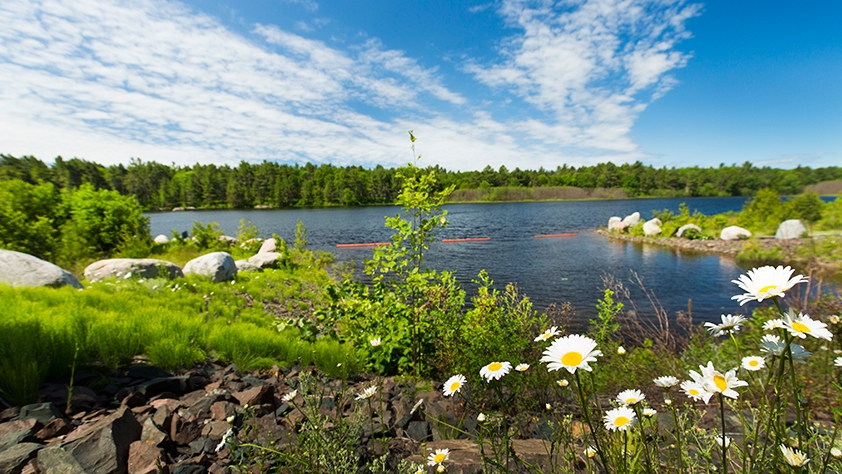Clean Air Energy
Image

Nuclear electricity generation is a vitally important part of the world's clean energy strategies for a low-carbon future. In our role as a safe, reliable and responsible producer of the uranium fuel needed to power nuclear reactors around the world, Cameco is proud to contribute to that future.
SAFE
- The nuclear industry – from uranium mining through to electricity generation – is highly regulated and monitored to ensure the safety of workers, the public, and the environment.
- The evidence over six decades shows that nuclear power is a safe means of generating electricity.
CLEAN
- Nuclear power plants have one of the lowest impacts on the environment of any electricity generation method because they:
- do not emit air pollution or greenhouse gases – clean electricity generated worldwide from uranium avoids 2.5 billion tonnes CO2 emissions annually
- isolate waste from the environment – used fuel bundles are stored in cooling pools at the nuclear power plant for 5 to 10 years until they cool. They are then placed on-site in large dry concrete and steel containers, with several layers that are thick enough to contain the radiation and cause no harm to workers or the surrounding environment.
- require a relatively small amount of land – an area the size of Nova Scotia would hold all the mining operations and nuclear power plants needed to supply the entire world's electricity. For the same amount of energy, an area the size of Alberta would have to be covered with solar panels, or an area the size of Quebec with wind farms.
- Uranium fuel is the world's most concentrated energy source – one 7-gram fuel pellet generates as much energy as 3.5 barrels of oil, 17,000 cubic feet of natural gas or 1,780 pounds of coal.
| Hydro | 4 |
| Tidal and wave | 8 |
| Wind | 12 |
| Nuclear | 16 |
| Biomass | 18 |
| Solar CSP | 22 |
| Geothermal | 45 |
| Solar PV | 46 |
| Wind + gas backup | 385 |
| Natural gas | 469 |
| Oil | 840 |
| Coal | 1001 |
RELIABLE
- Nuclear plants are built to run 24/7 and provide full baseload power when it is most needed. This level of reliability is particularly important during peak demand times and when alternative low-carbon sources, such as wind or solar, are not available.
- Nuclear plants typically run for about 18 to 24 continuous months before requiring refueling. Many reactors are designed to be refueled while operating, further increasing operational time. In August 2016, an advanced gas-cooled reactor in England achieved 895 days of continuous non-stop operation – generating 13,495 TWh during that period. The previous record was held by unit 7 of the Pickering plant in Ontario, Canada, which had an 894-day continuous run between April 1992 and October 1994.
- Many nuclear power plants routinely operate at 93 to 95 percent capacity over extended periods. No other electricity source can match this level of reliability.
AFFORDABLE
- Because of the energy density of nuclear fuel, far less is required to generate higher electricity outputs. One pound of uranium fuel can generate about 17,000 kWh of electricity, enough to power two average homes for an entire year. 29 barrels of oil or 8 tons of coal would be needed to generate the equivalent electricity.
- Nuclear power plants, although costly to build, are economical to operate and are designed to function safely for many decades.
- In Ontario's power mix, for example, only hydroelectric power has a lower cost per kilowatt-hour (kWh) than nuclear power does. Gas and wind are almost twice as expensive per kWh than nuclear, and solar is nearly ten times as expensive.
Beyond nuclear power generation, the nuclear industry has many other applications that benefit us all, including medicine, food safety, agriculture and consumer products.
